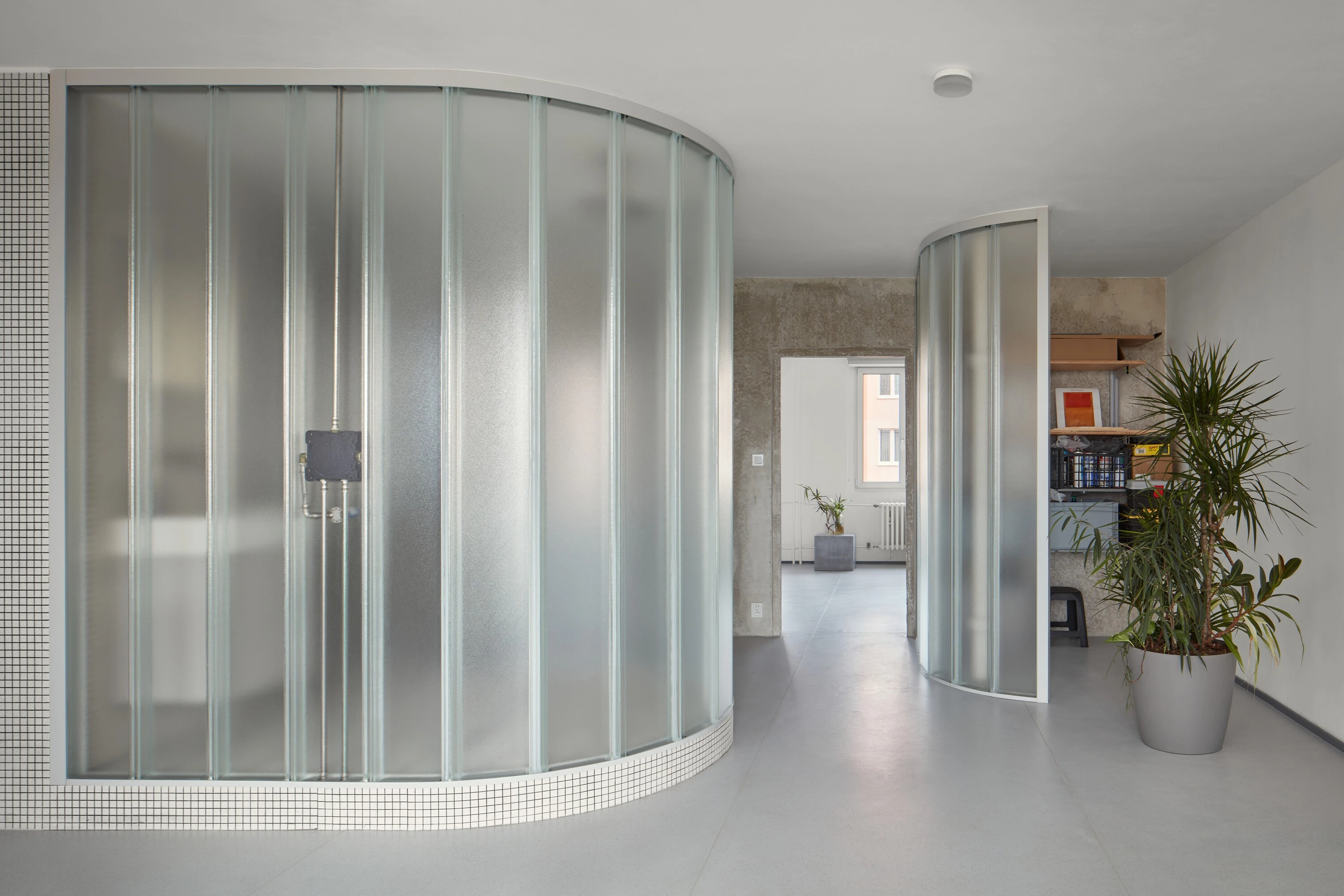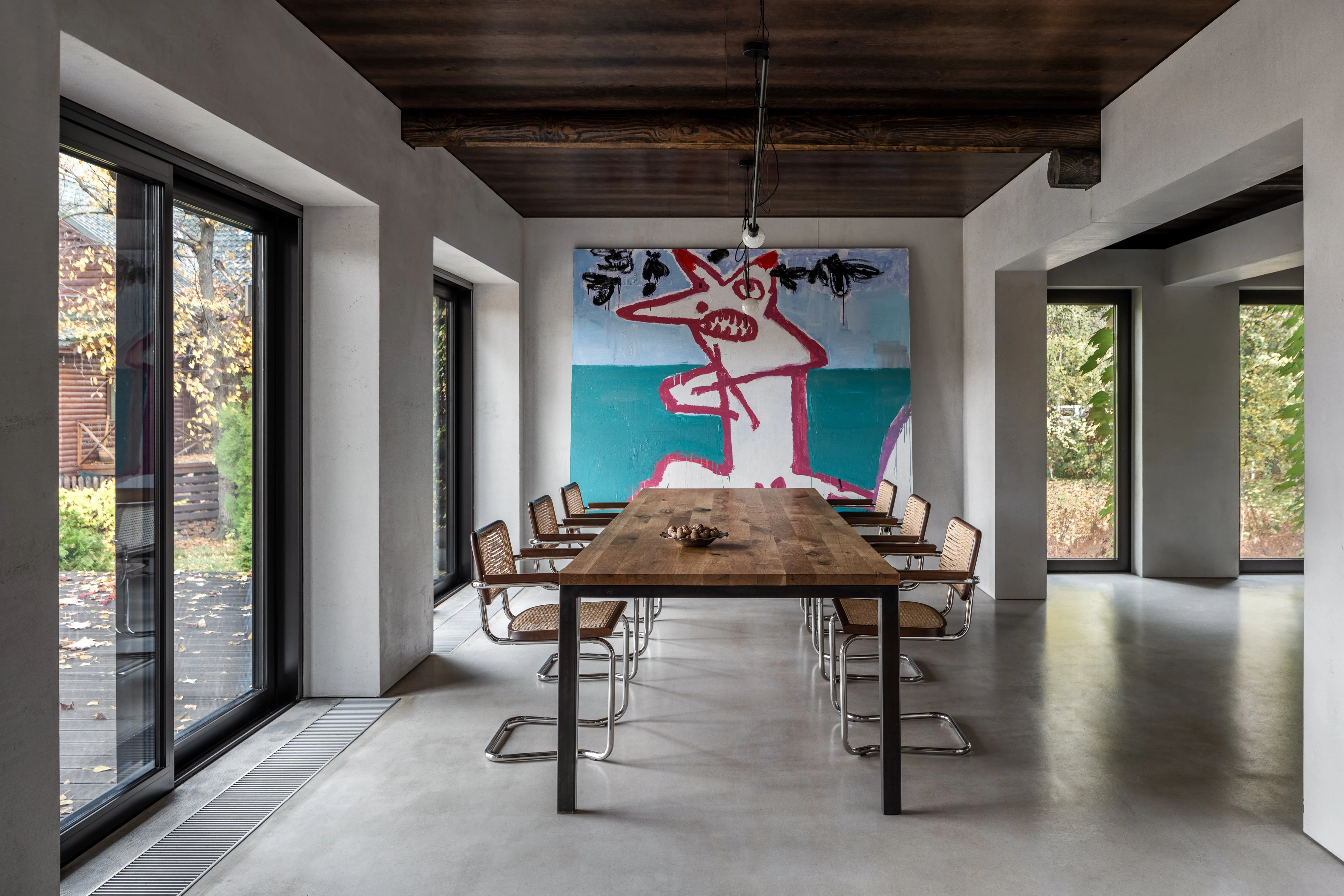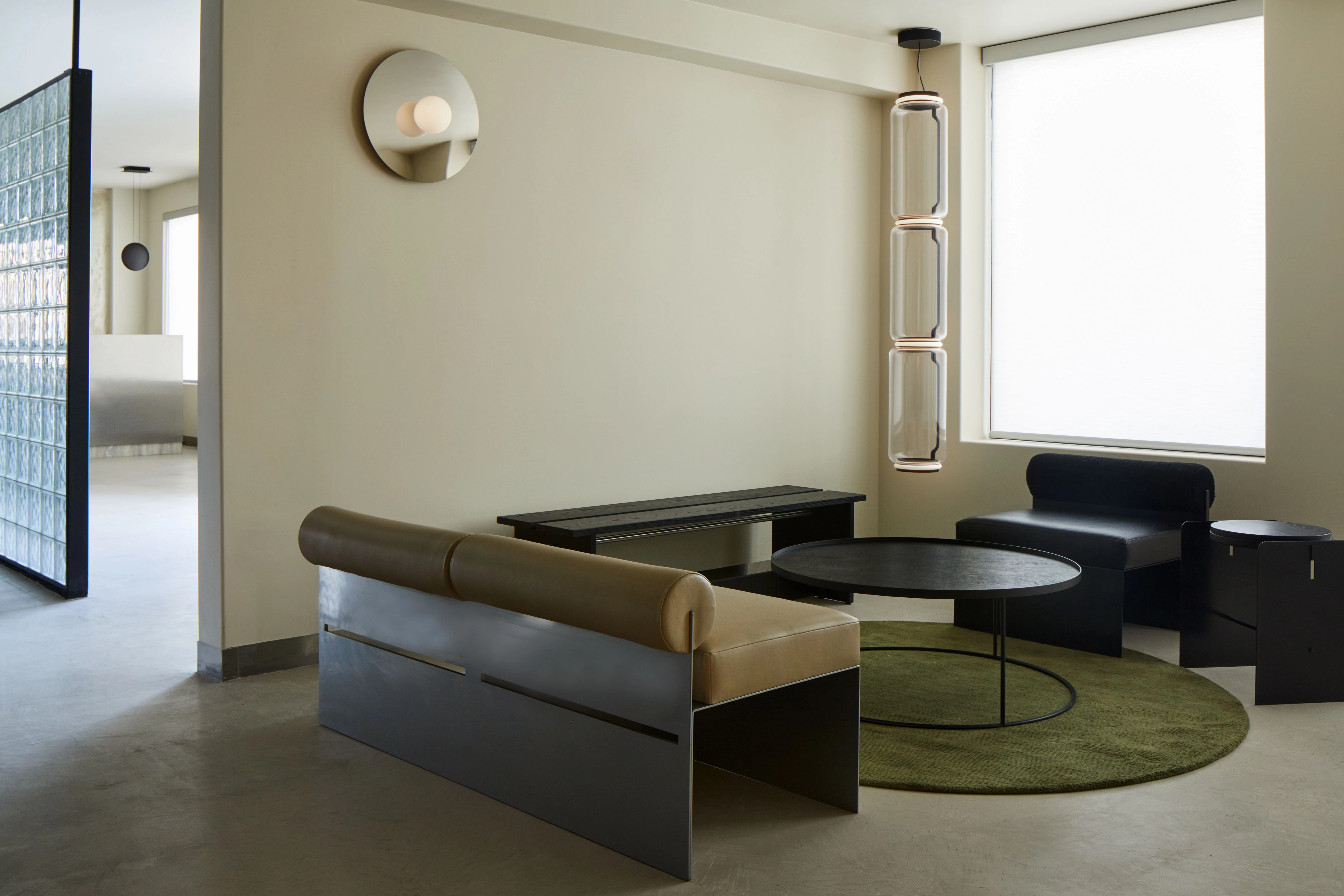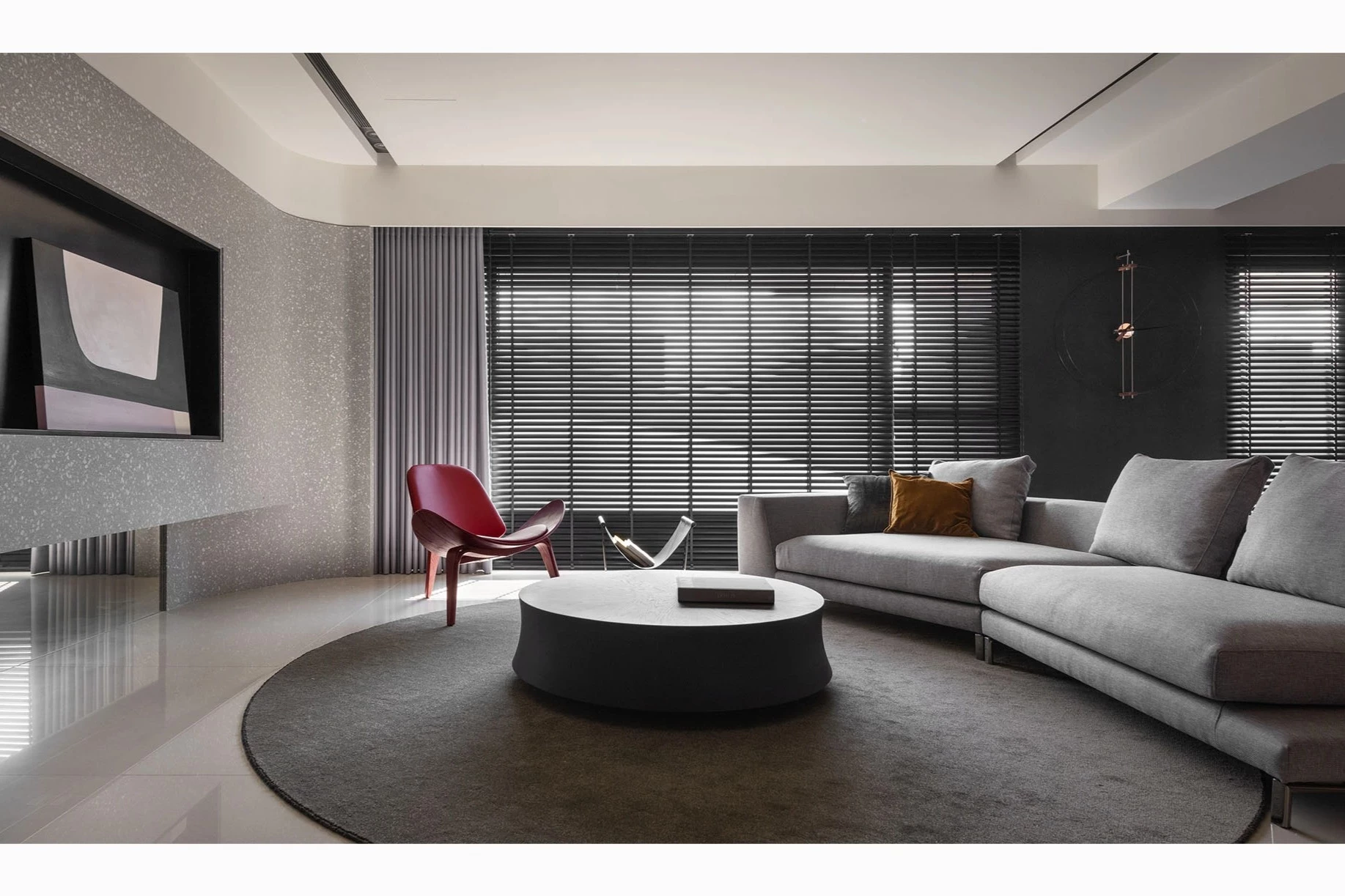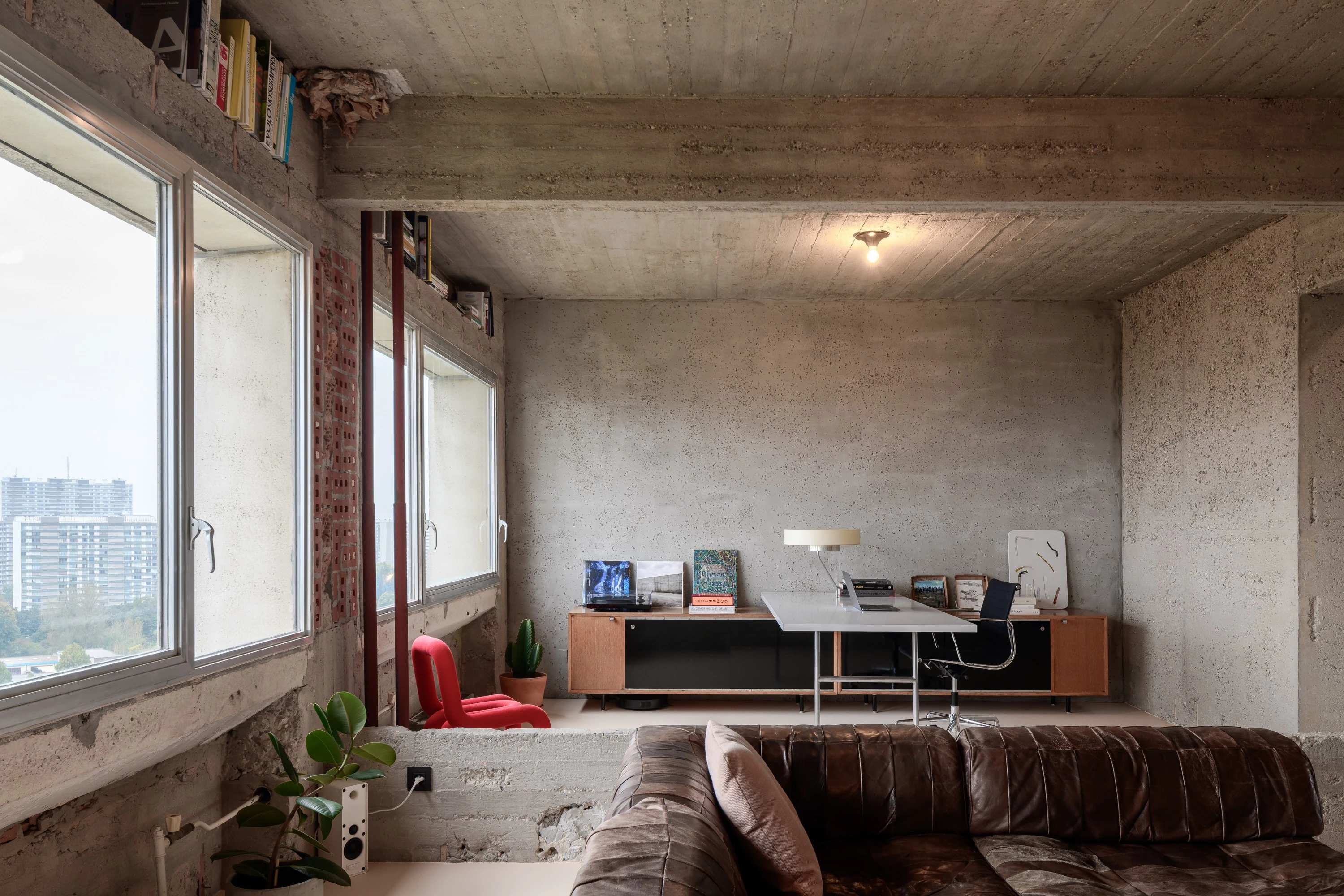中國長春市 砼殿
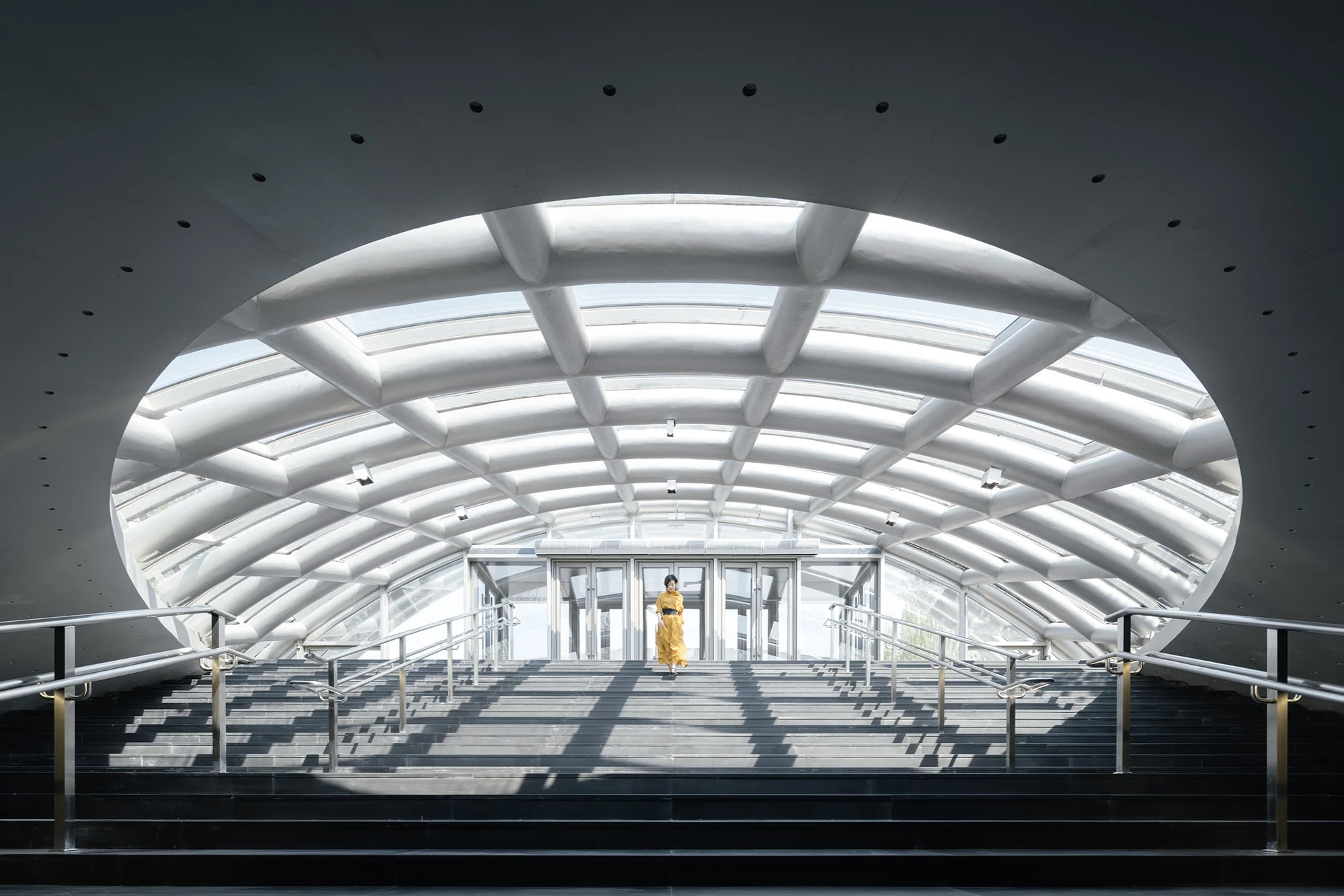
"Beneath your feet, lies the roof of another profound world."―UNDERLAND:A Deep Time Journey
「你腳下的地面,是另一個深邃世界的屋頂」――《大地之下》
The concrete palace designed by Wutopia Lab, namely The Eye of The Museum of the Palace Museum of the Manchurian Regime (Changchun), which is the first decorative fair-faced concrete building in Jilin Province, the largest fair-faced concrete building in Northeastern China, and the largest thin-shell large-span earth-sheltered swept surface underground building in China, was officially completed and inaugurated on May 18, 2023, International Museum Day, after six years of design and construction.
由 Wutopia Lab 所設計的砼殿,即偽滿皇宮博物院(長春)之博物館之眼藝術宮,是吉林第一座飾面清水混凝土建築,東三省最大的清水混凝土建築,也是中國最大的雙曲面異形薄殼大跨覆土地下建築,經過6年的設計與施工於 2023 年 5 月 18 日國際博物館日正式落成啟用。


The palace of the Manchurian Regime doesn't occupy much area, so much so that it gives me an impression of a transitional palace. However, its construction exhibits meticulous attention to detail, as the grand roofs harmoniously merge Western classical elements with restrained yet exquisite ornamentations. Standing at the northeastern corner of the palace, the white Museum of the History of Northeast China Under Japanese Occupation, designed by Master Qi Kang, features a gently sloping roof that bows beneath the palace's principal ridge.
偽滿皇宮佔地並不大,以至於團隊認為其是個過渡皇宮,但建造卻很講究,大屋頂結合洋風,古典主義形制,裝飾節製而精緻。齊康大師設計的白色東北淪陷史陳列館則遠矗立在偽滿皇宮博物院的東北角,緩緩的坡屋頂低於皇宮正脊,非常謙虛。
鑑於皇宮以及陳列館在結構上都是常規的,團隊決定把工業建築常見的大跨度結構引進來而創造出巨大的室內空間來表達骨子裡的自豪。並採用風雅的曲線,透過象徵,隱喻,聯想等一系列修辭來表達一個偉大城市在新的歷史時期希望再創輝煌的信心。同時,藝術宮讓我們得以重新審視歷史以及記憶,從而領悟生命存在的意義的當代表現主義建築。



My rationale for selecting fair-faced concrete is straightforward - its inherent industrial character. However, my comprehension and portrayal of fair-faced concrete pale in comparison to those of Mr. LIU Yichun and Mr. DONG Gong. I have made the decision to embark on a journey to the remote 1930s when early expressionism used to prevail, in order to liberate concrete from the confines of orderly molds. Drawing upon my familiarity with steel, I employ it as formwork to shape large-span thin-shell swept surface concrete domes. In response to the concerns raised by project architect Huang He regarding the thickness of the protective coating, which could obscure the meticulously arranged panel joints, visible joints, and tie rod eyelets meticulously visualized through BIM technology, I assured Huang He that it actually possesses considerable merit. Took Eero Saarinen's concrete and Le Corbusier's mortar as examples, joints and eyelets are not something necessary for us to express. The protective coating establishes a transparent boundary on the concrete surface, and in the presence of light, the concrete acquires a radiant halo. As lighting conditions shift, the luminescence within the halo gracefully traverses the curves, unveiling a restrained dynamism. No, it is enchantment. It is an enchanting expressionism.
選擇清水混凝土的理由很簡單,非常工業。團隊將混凝土從整齊的模板中釋放出來。用設計師熟悉的鋼作為模板去塑造大跨距雙曲面薄殼混凝土穹頂。保護劑在混凝土表面會形成一道透明的邊界,在光線下,混凝土彷彿有了一道暈。隨著光線的變化,暈裡的高光沿著曲線踱步,一種克制的奔放閃現出來。



The project complexity goes beyond expectation, not only because Changchun experiences frozen ground periods, which means that one-third of the construction time cannot be utilized until the structure is topped off, but also due to various unexpected work stoppages during this period. It led me to doubt at one point whether it could be completed. This hidden giant structure requires meticulous construction process organization to achieve its final grand narrative.
工程複雜的程度超越想像,不僅因為長春有凍土期,意味著在結構封頂前,三分之一的時間不能施工,期間還經歷各種突發的停工,以至於團隊一度懷疑是否能夠建成。這個被藏起來的巨構需要精緻的施工工藝組織來完成最後宏大的敘事。


The art museum is situated on a razor-shaped site between the Manchurian Regime palace complex and Museum of the History of Northeast China Under Japanese Occupation. There is a vertical differential of 7.2 meters from north to south. The gross building area is 16,650 square meters. The maximum burial depth on the northern side of the art museum reaches 17.67 meters, while at the plaza entrance on the southern side, it is 10.47 meters. The structure comprises two underground levels. The closest distance between the deep foundation pit of the art museum and the original palace walls and fortifications is about 450mm, necessitating the installation of continuous drilled piles and tie rods. Additionally, new anchor rod static pressure piles are required to ensure balance on both sides of the exhibition hall. Moreover, a new underground passage must be constructed to establish connectivity with the basement of the exhibition hall.
藝術宮選址在偽滿皇宮建築群和東北淪陷史陳列館之間的刀把型基地上。南北高差7.2公尺。總建築面積16650平米。藝術宮主體北側最大埋深17.67m,南側廣場入口最大埋深10.47m。總計地下兩層。建築大開挖深基坑邊緣距離原有宮牆及碉堡最近距離450mm,不僅需要加設支護樁和錨索,還要在陳列館一側地下新增錨桿靜壓樁保證兩邊平衡。另外還要加設新的地下通道和展示館地下室聯通。

The high formwork decorative fair-faced concrete spans over 10,000 square meters. Cables and pipelines required by the museum must be embedded in advance, meeting the requirements for constant temperature and humidity control, wind resistance, hazard mitigation, security, as well as fire safety. The roof of the art museum consists of a 2,000-square-meter plaza for social activities, a parking lot, and a green space.
超過10,000平米的高支模清水混凝土飾面就是最後完成面,博物館要求的各種設備管線都要事先規劃預埋好後,要滿足恆溫恆濕,防風抗災,安保防盜,消防警示的要求。藝術宮的屋頂是個2000平米的活動廣場,一個停車場和一個綠地。
The continuous roof extends uninterrupted until it abruptly terminates at the southern plaza, where its cross-section forms the imposing facade. The vista in front of the exhibition hall's entrance remains unobstructed, while the southern plaza imparts a sense of the earth being delicately lifted. Nonetheless, visitors would never suspect the existence of a profound underland palace within the crevices of the earth, captivating their hearts and minds.
團隊展示館正門前設計了一個插入地下的單層鋼網殼覆曲面玻璃體,往下拾階而下是藝術宮正廳,回頭則在拱形框景裡烘託了陳列館。整個連續的屋頂以剖面做立面在南廣場戛然而止。在陳列館門前,視線毫無阻礙。在南廣場,大地似乎被掀開一邊。無論如何。第一次來的觀眾都不會知道大地之下,或是大地的罅隙裡面有個深邃的宮殿,讓人心馳神迷。

What fascinates me about museums is that they have transcended beyond mere chronicles and portrayal of human historical achievements. The word "museum" has been given new meanings way deeper than collections of art. Nowadays, museums should delve deeper into the 4.6 billion years history of Earth to search for the true meaning of life and its relativity with time. Different temporal scales give rise to different perspectives on history. This is what I call "Deep Time".
博物館讓人著迷的是,它不局限於考據並展示人類歷史成果,更深刻思考研究生命這個主題以及時間的相對性。不同的時間尺度會帶來不同的歷史觀。這就是Deep time。當設計團隊構想空間的時候,期望利用地下建築這個切入點去表現所謂的「深」。也想用超大尺度讓人失去方向感去改寫我們習慣的直線的時間軸。最後確立了中心是彷彿展翼的雙曲面穹頂,18m×27.5m邊長,16.5m為最高點的結構單元作為空間節點。整個藝術宮有三個彼此聯繫的空間節點,它們是試圖引導觀眾在Deep time作為背景引導下去理解生命,歷史,環境和社會密切關係而得以審視自己未來的發展方向以及生存和生活方式的plot。
I associate the word "introspection" with eyes. Consequently, I made the decision to integrate skylights resembling eyes into thin-shell swept surface domes that gracefully emerge from the ground, guiding the natural light into the underground space. Eyes bear a conspicuous symbolic significance and amplify the role of natural light in shaping the viewers' encounters and interpretations. They serve as a means of guiding viewers towards a contemplation of temporal perspectives within the ephemeral span of their lives.
審視這個詞讓人聯想到了眼睛。因此設計上決定在突破地面的雙曲面薄殼穹頂開設眼睛形狀的天窗。把天光引導到地下來。眼睛有著顯而易見的象徵意義,更能強化天光塑造觀眾體驗與觀念。它會幫助觀眾重新在人生很短的一個時段理解不同的時間觀。毫無疑問,天光塑造了藝術宮的靈魂。通常的地下建築比較是庇護所,天光把藝術宮這個巨大殿堂背後的「深」給展現出來了,從而讓藝術宮具有了精神性和神聖性。當站在這一組被天光引導的空間裡,會覺得似乎有無限的時間,或是只有時間。

I conceal the intricate functions of the museum on either side of the main space, emphasizing the purity of the main space, which early evokes the most common perception of time - eternity. However, I have always harbored skepticism towards the concept of eternity. Perhaps, due to the brevity or fragility of our lives, humanity tends to employ vast and solid entities as symbols of eternity, yet this inclination is largely illusory. Within the subterranean natural light, in that fleeting moment of time, amidst the pursuit of the ever-shifting and distant illumination that binds the three spatial nodes, individuals may momentarily experience a semblance of eternity, though in truth it amounts to mere minutes. The multitudes, unrestricted by the confines of place, and their diverse and ever-changing perceptions in disparate moments, embody the essence of eternity. The Deep Palace captures this fleeting eternity within its seemingly immobile material expanse.
博物館複雜的各項功能隱藏在主空間的兩側,突顯了主空間的純粹,這很容易讓人聯繫最常見的時間觀――永恆。可能基於我們生命的短暫或脆弱,人們會用巨大堅固的實體去表現永恆,在地下天光裡的那個短暫的時間裡,在追逐這三個聯繫而有距離並變化的天光裡,個人各異的感悟或許也有永恆,但對具體的人而言也就是那麼幾分鐘。無數人在不受場地束縛,不同時刻裡的此起彼伏的相似相異的感悟則是永恆的。砼殿,以一個龐大似乎靜止的物質空間突然俘虜了這短暫的永恆。
主要建築師:俞挺.黄河
施工單位:國建築第八工程局有限公司華北公司
空間性質:博物館
建築面積:16650平方公尺
主要材料:清水混凝土
座落位置:中國長春市
影像:CreatAR Images
文字:Wutopia Lab
整理:王韻如
Principal Architects:Yu Ting.Huang He
Contractor:China Construction Eighth Engineering Division Co.,Ltd.
Character of Space:
Building Area:16,650㎡
Principal Materials:Concrete
Location:Changchun City, China
Photos:CreatAR Images
Text:Wutopia Lab
Collator:Ana Wang





